Rainy Camping: Stay Dry, Enjoy Outdoors
I. Introduction
Camping in the rain often gets a bad rap. The thought of soggy tent walls, muddy campsites, and chilling dampness is enough to make most outdoor enthusiasts head for cover. However, with the right mindset and proper preparation, camping in wet weather can not only be feasible, but also tremendously enjoyable. With creative planning, flexibility, and preparation, they could be uniquely adventurous and memorable. Waterproof shelters and clothing kept us dry on the outside while our resilient attitudes shone from within.
II. Preparing for Wet Weather
Approaching a rainy camping trip begins with proper preparation tailored to your specific situation. Te key is scoping out the forecast ahead of time and using that information to guide your packing list and plan.
A. Weather Considerations
Before embarking on a camping trip with potential rain in the forecast, take some time to assess the expected conditions.
1. Checking forecasts and making informed decisions
Utilize reputable weather resources to view hourly and daily forecasts. Pay attention to precipitation probability, rainfall accumulation estimates, wind speeds, and any risks of severe storms.
Use this data to determine if the expected conditions seem reasonably safe and enjoyable for your trip based on your comfort level. Moderate overnight showers may be fun, but severe thunderstorm warnings could signal a need to postpone.
2. Tailoring tips for car campers, RVers, and campervan travelers
The strategies for staying dry and comfortable in the rain depend somewhat on your shelter setup. Large RVs can provide built-in protection, while tent campers will need to take extra precautions.
Wherever you lay your head to rest overnight, be ready to adjust your approach based on the forecast. The activities and backup plans for a van camper riding out light afternoon drizzle will likely look different than someone in a small tent anticipating heavy rain after midnight.
B. The Most Important 5 Tips
While an entire bookshelf could be filled with rainy camping advice, these core principles rise above the rest in importance:
1. Rain shelter options and setup
Make sure you have reliable shelter supplies capable of protecting you from the elements, whether a weatherproof tent, camper, or tarp setup. Pitch tents on higher, level ground in protected areas when possible. Point openings away from prevailing winds. Secure rain flies and anchor securely.
2. Waterproof clothing essentials
No matter how watertight your shelter, you’ll need quality outer layers to stay dry while spending time outside. Pack waterproof, breathable jackets, pants, footwear, gloves, and hats for all members of your group.
3. Rainy-day activities preparation
Bring supplies for covered alternative activities in case sustained wet weather limits your time outdoors. Think books, games, cards, music, and crafts. An emergency battery supply can be helpful for electronics.
4. Tenting precautions for a dry interior
Use plastic tarps under tents. Elevate gear off tent floors and wipe moisture from tent walls. Safely use camping stoves under vestibules if needed. Bring extra towels and replace damp items.
5. Ensuring a way to warm up
Hypothermia is a real concern when camping in rain. Pack extra blankets, sleeping bags, socks, and base layers. Prepare hot drinks and meals to raise body temperature if needed. In extreme cases, relocating to fully protected indoor shelter nearby is the safest approach.
III. Shelter – The Ultimate Priority
When camping in rainy conditions, reliable shelter capable of keeping you dry is absolutely vital. Without secure, waterproof refuge, both your comfort and safety are put at risk. Let’s explore various effective shelter options.
A. The Importance of Shelter
Having adequate shelter while camping in the rain should be your number one priority. Here’s why it’s so crucial:
1. Highlighting the significance of shelter in staying dry
Staying dry is the first line of defense to maintaining warmth and preventing hypothermia when camping in wet conditions. Quality waterproof shelter creates the critically important barrier between you and precipitation.
2. Exploring different shelter options for various camping setups
The ideal protective shelters range from full RVs at one end to simple tarps at the other. Tents, popup canopies, trailers, vans, truck bed caps, and makeshift natural shelters also have potential to serve the purpose.
3. Effective use of tarps and their importance
For tent campers without campers or RVs, waterproof tarps act as an indispensable additional barrier when used properly. They can be configured in numerous ways to expand water protection.
B. How to Hang a Tarp
One great rainy day shelter option is hanging a tarp. Follow this step-by-step guide:
1. Understanding the role of tarps in camping
- Inexpensive and versatile protective layer
- Creates canopy to shelter site from precipitation
- Can be paired with tents for added coverage
- Waterproof fabric draped and supported using ropes, poles and trees
2. Step-by-step guide for hanging a tarp effectively
Supplies Needed
- Tarp (Polyethylene, canvas, or ripstop nylon work well)
- Rope
- Tent stakes
- Bungee balls/rocks
- Trees and poles
Process
- Stretch out tarp on ground fully before hanging
- Secure corners with anchored stakes, poles, trees, or heavy objects
- Tie rope to grommets around perimeter
- Adjust angles periodically to ensure optimal coverage as conditions change
3. Considerations for ropes and knots
- Use durable rope that won’t stretch when wet
- Tie secure knots like two half hitches and taut line hitches
- Leave a little slack on anchor points to allow giving/movement
C. Other Shelter Options
Beyond tarps, also consider:
1. Considering natural shelter and caution with pop-up shelters
Natural shelters like dense trees, overhangs, and rock outcroppings can also shield from rain, but come with some risks to evaluate like lightning. Some pop-up shelters collapse when saturated.
2. Utilizing canopies and umbrellas for additional cover
Large canopies provide handy shelters for cooking, gear storage and activities during extended downpours. Individual umbrellas help move safely between sites.
IV. Gear and Equipment for Wet Weather
The right rainy camping gear goes a long way towards staying dry and comfortable. Having quality, protective equipment makes all the difference.
A. Essential Gear
Start by packing these waterproof camping gear essentials:
1. All-weather tents and their features
Look for durable, fully waterproof tents with reliable rain flies/vestibules, full coverage rainfly doors, sealed seams, and covered vents. Sturdy poles and flooring also help weather storms.
Key Features
- Waterproof fabrics – Silnylon or polyurethane coatings
- Rain flies with vestibules
- Seam sealing
- Sturdy, wraparound poles
- Waterproof base
2. Waterproof sleeping pads, bags, and other insulation
Quality waterproof and insulated sleeping pads provide a warm, dry oasis to sleep protected from wet ground. Water-resistant sleeping bags paired with liners and blankets also help.
3. Waterproof storage solutions and backpack covers
Store essentials in lightweight dry sacks and plastic bins safe from moisture. Trash bag liners double as packing inserts. Backpack rain covers or pack covers are very useful.
4. Water-resistant camping chairs for comfort
Bring lightweight portable chairs with quick-dry mesh and metal materials that shed rain so you have somewhere dry to sit.
B. Staying Dry While Camping
With key gear covered, these tips help stay dry at the campsite:
1. Waterproof and breathable clothing essentials
The ideal wet weather camping clothing utilizes waterproof yet breathable fabrics like Gore-Tex to avoid moisture saturation. Choose jackets/pants, hats, gloves and well-insulated, waterproof boots.
2. Choosing appropriate waterproof footwear
Look for waterproof hiking boots or all-weather shoes with grippy tread. Change socks as needed and bring shoe drying supplies.
3. Tips for staying warm and dry with gloves, hats, and umbrellas
Windproof, insulated gloves paired with protective outer mittens block cold. Thermal hats that cover ears have similar benefit. Handheld camping umbrellas help navigate sites.
V. Camping Activities in the Rain
Don’t let soggy weather completely ruin your adventures – you can still eat well and have fun rain or shine if you plan activities accordingly at the site.
A. Eating Well Despite the Rain
Enjoying good food brings comfort. With these ideas, the rain won’t wash out meals:
1. Packing foods requiring minimal prep
Stock up on nutritious snacks and no-cook foods to minimize time spent out in elements:
- Granola, protein bars
- Dried fruit, trail mix
- Peanut butter and crackers
- Canned tuna, chicken, or veggies
2. Strategies for preparing hot meals under canopy
Set up stove, grill or fire pit under best available outdoor cover. A large waterproof canopy works well, or cook in a vestibule with the tent door open for ventilation. Having a few go-to rainy day recipes planned helps streamline preparation.
3. Insulating coolers to keep food dry
Use reliable coolers with secure fitting lids kept off the wet ground on a pallet or in the tent vestibule. Lining the bottom with Reflectix insulation and ice packs helps regulate interior temps. Separate contents by category using plastic bins or trash bags.
B. Fun Rainy Day Activities
Just because you’re stuck at the camp, don’t sit inside bored all day. Entertain your group with these ideas:
1. Playing games, reading, drawing, or napping in the tent
Whip out deck of cards, books, pads of paper and pens for endless amusement. String up a lightweight tent light. Cozy down for tent naps.
2. Going on short hikes in rain gear
Walk nearby trails in quality raingear. The peaceful drizzle through the trees can be meditative. Fewer people means more seclusion to spot animals.
3. Exploring the area without crowds
Tour attractions likely less crowded due to weather – museums, shops, restaurants, and historical sites.
VI. Safety Measures During Rainstorms
While rainy camping certainly can be great fun, you must exercise caution in severe storms. Prioritize safety with these tips:
A. Avoiding Natural Hazards
Camping in remote areas makes you more vulnerable to environmental hazards like flooding, landslides, and falling trees that extreme weather can trigger or worsen.
1. Caution against flooding, landslides, and other hazards
Scope out camp areas ahead of time ensuring they are on high ground not prone to flooding. Check for loose ground that could slide if saturated. Pick protected sites away from dead tree limbs that could fall.
2. Close monitoring of weather forecasts for severe conditions
Keep a very close eye on developing weather systems using a weather radio, phone alerts, and radar maps. Abort plans if there is any risk of intense lightning, tornadoes, flash flooding with escape routes blocked, or other threats.
3. Emergency planning in case of worsening storms
Identify and have directions handy to fully enclosed buildings with electricity, heat and plumbing like nearby public facilities or hotels if needing to urgently take弼over from rapidly deteriorating conditions.
4. Regular gear checks for leaks and equipment failures
Periodically inspect tents, tarps, and waterproof clothing for any failures allowing moisture inside. Address issues immediately like placing an extra tarp over a damaged tent roof. Have repair tape and extra lines available just in case. Monitor site for rising water.
VII. Conclusion
The allure of camping persists whatever the skies may bring – including bouts of rain. But with knowledgeable planning centered on quality waterproof shelter, clothing, and equipment paired with creative rainy day activities and caution during severe storms, showers don’t have to ruin your camping fun. In fact, they can even add to the experience and memories.
So next time ominous clouds loom over your upcoming camping trip, have no fear! Follow these tips to embrace the weather and safely enjoy the great outdoors, rain or shine. Just maybe sneak in a couple extra blankets and a selection of your favorite hot cocoa mixes too.
FAQs about Rainy Camping
Camping in light to moderate rain can be safe if you take proper precautions. Avoid camping in severe storms with lightning, flooding, high winds, etc. Check weather reports and forecasts regularly and have an emergency plan.
Use waterproof tents, sleeping bags, pads, and clothing. Bring extra layers and change out of wet clothes. Wool socks retain warmth when wet. Stay hydrated with warm drinks and soups. Use insulated, waterproof gloves and hats.
Pack non-perishable foods requiring minimal prep like protein bars, trail mix, peanut butter, crackers, fruits, and canned goods. Bring a stove to make hot drinks and soups. Use insulated coolers and waterproof storage.
Yes, as long as weather conditions are safe. Look for protected areas under thick forest canopy. Use pro fire starting techniques with dry kindling and wood. Small “hobo stoves” work well. Exercise extreme caution.
There’s still lots of fun to be had! Play classic camping games or trivia in your tent, read books, write stories, nap, draw, sing songs, and just spend time bonding with your group. Explore the outdoors in rain gear.
Thank you for taking the time to explore our article! If you’re hungry for more camping tips and outdoor adventures, check out our next insightful piece on essential gear for a memorable experience here. Happy reading!




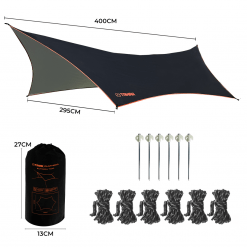
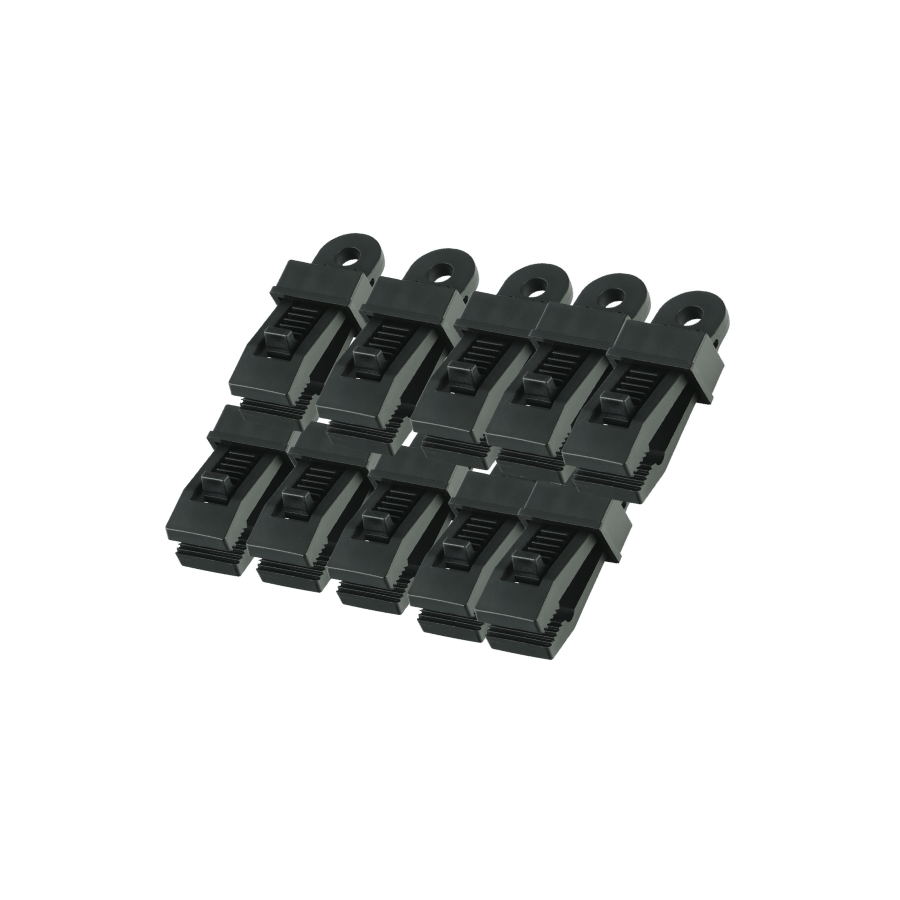
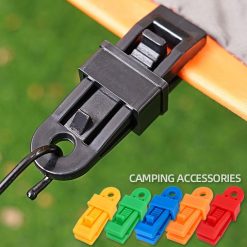
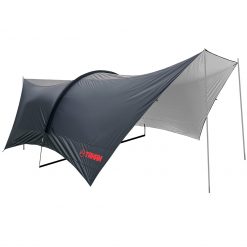
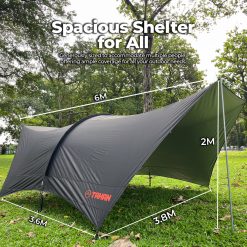
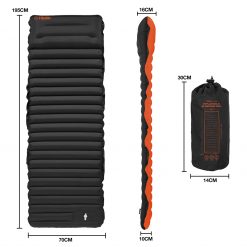
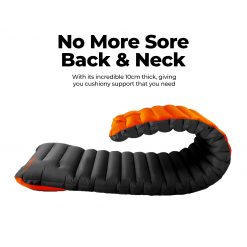
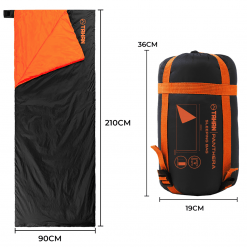
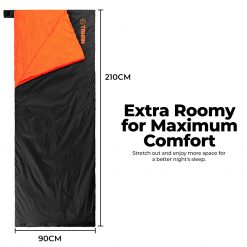
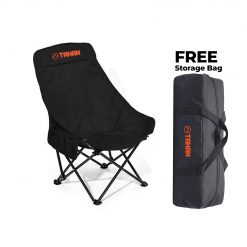
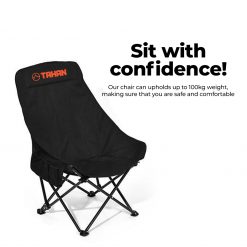
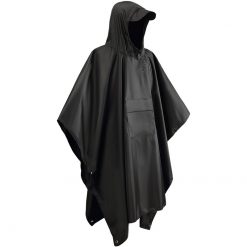
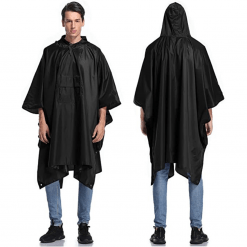
Shop Our Gears
Camp & Hike
TAHAN
COMBO
SLEEP SYSTEM
More tips that you might find useful:
12 Secrets to Getting Cheap Flights in Malaysia
1 Comments
马来西亚露营:户外探险综合指南
Camping in Malaysia: A Comprehensive Guide to Outdoor Adventures
2 Comments
Conquering Mount Kinabalu: A Hiker’s Guide to Malaysia’s Highest Peak
Camp Cooking Gear Guide – Build the Ultimate Camp Kitchen!
Top 5 Most Popular Campsites in Selangor
Ultimate Guide to Tropical Leisure Camping in Malaysia: TAHAN’s Top 5 Gear Picks
The Ultimate Guide to Hammock in Malaysia: Comfort, Adventure, and Relaxation